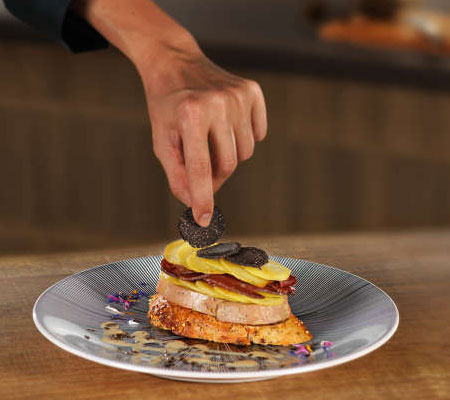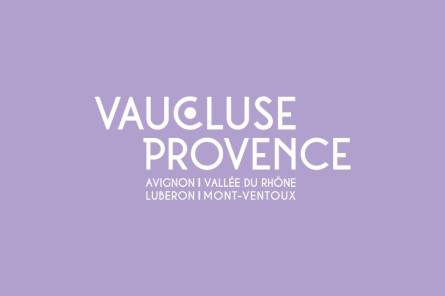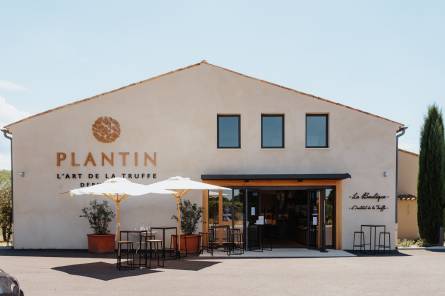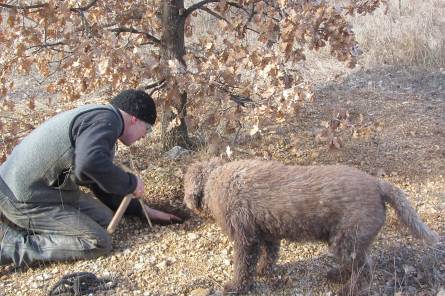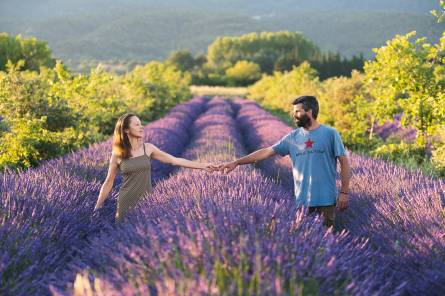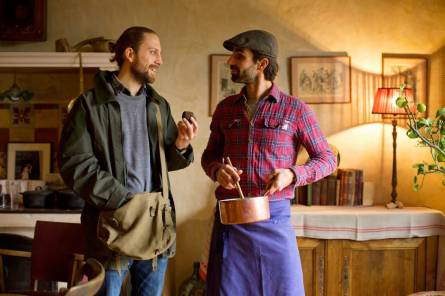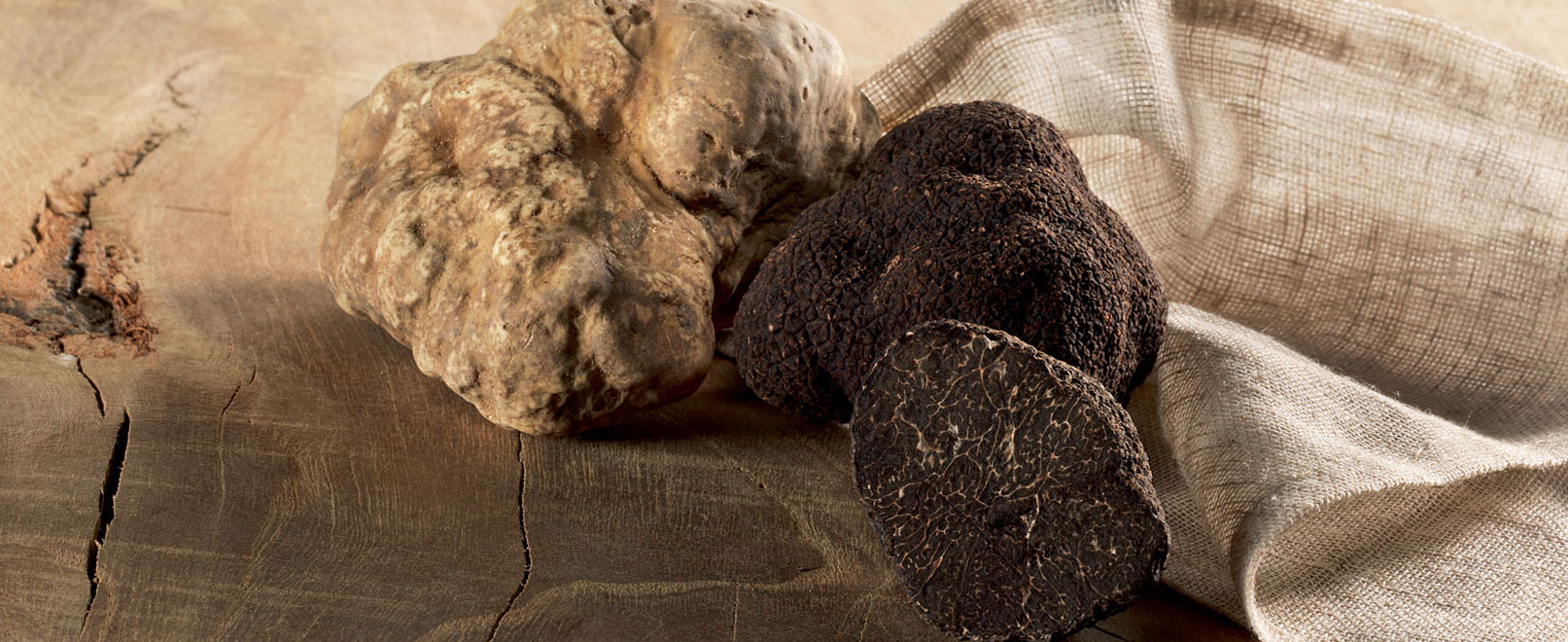
On the hunt for truffles in Vaucluse
Mission “Black diamond”
The leading producer of the black diamond in France, Vaucluse is home to 500 truffle growers, each passionate about the mystery of the Tuber Melanosporum. Very approachable, they beckon us closer so that they can share the secrets of this irresistible mushroom, as well as inviting us along to hunt them when the time comes. I decided to follow the “Rabasse en Vaucluse” trail with local professionals. With tasting sessions and activities, let’s begin our truffle journey and mission “Black Diamond”!
The Institut de la truffe
At Plantin, specialist and supplier to fine dining restaurants
For nearly 70 years, the path of the Plantin family has crossed with that of the black diamond. So much so that today, this Vaucluse-based company supplies the best tables in France and exports its products all around the world.
Over the past year, it has launched more widely into the retail sector, increasingly curious about authentic and local products.
In Puyméras, I discovered the Maison Plantin institute, where each product highlights the art of the truffle. The decor of this shop reflects the precious mycorrhised mushroom, with touches of both light and dark brown creating a perfect visual harmony.
The culinary decor accented with fine materials, such as wood and wrought iron, is sophisticated and elegant. Everything is inspiring. From pâtés to flavourful condiments, seasonings to chocolates, truffles are present in every tasty treat. Intoxicated by the fragrance filling the space, I can’t say no to trying some of the delicacies. Have you ever tried them?

Firm Favourite
Maison Plantin regularly organises cooking (and gourmet!) classes focussing on the truffle, but also mushrooms, also knowing how to heighten their flavours (like morels).
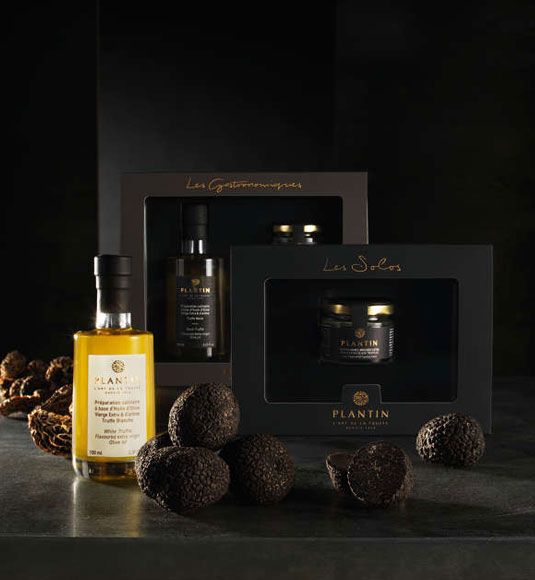
Truffle and Wine Museum in Richerenches
This time you can take as long as you like discovering the famous mushroom as the Truffle and Wine Museum has been established in the vaulted cellars of a former command post of the Knights Templar.
The open stonework and the arches marking the limit between each space give this place a very warm ambiance.
Literature, interactive terminals and educational panels explain the local history and treasures of the truffle. And entrance is free!
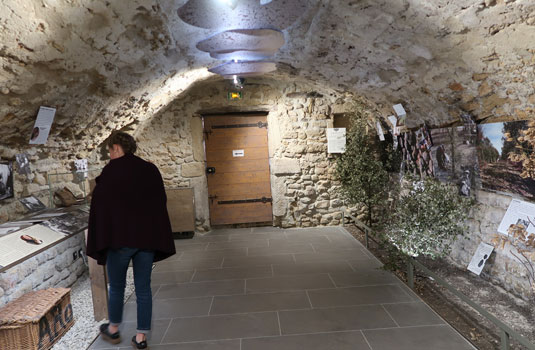

Note
As the star product of this little village in the Enclave-des-Papes area, the black truffle is honoured on the 3rd Sunday in January each year. A mass is devoted to it, there are walks, and a lovely festival given in honour of the truffle growers!
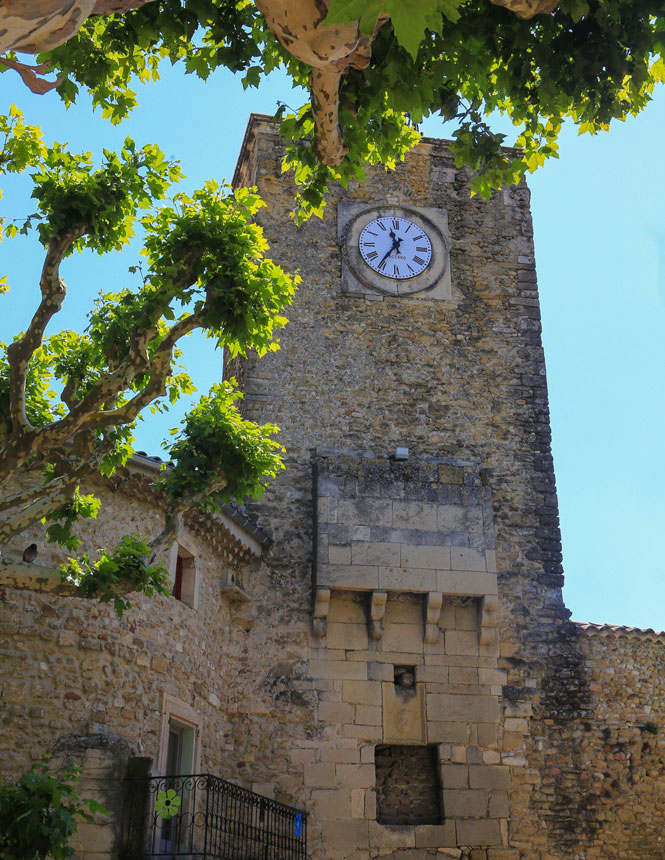
Ventoux Truffle Hunting in Monteux
Welcome to the estate of the Jaumard family in Monteux, truffle producer in the Ventoux for 3 generations.
Discover a “cavage” (truffle hunting) session with Baptiste Jaumard and his dog. Like his brother, Baptiste inherited his parents’ passion for this profession and pursued it after completing his studies. Today the family business is centred around the truffle: its production, making products using truffles and agrotourism activities (truffle hunting, discovery days and truffle weekends).
The truffle hunting experience is amazing. The dog has replaced the less than careful pig when hunting, and its sense of smell is rock solid, never getting it wrong!
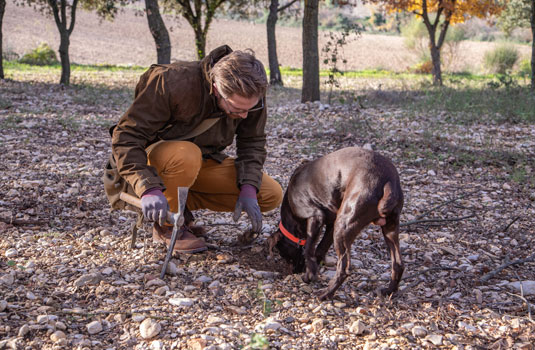

Did you know?
Truffles can also be detected by a particular species of fly which, attracted by the irresistible odour (even though it is underground), makes its nest near where the truffle is growing.
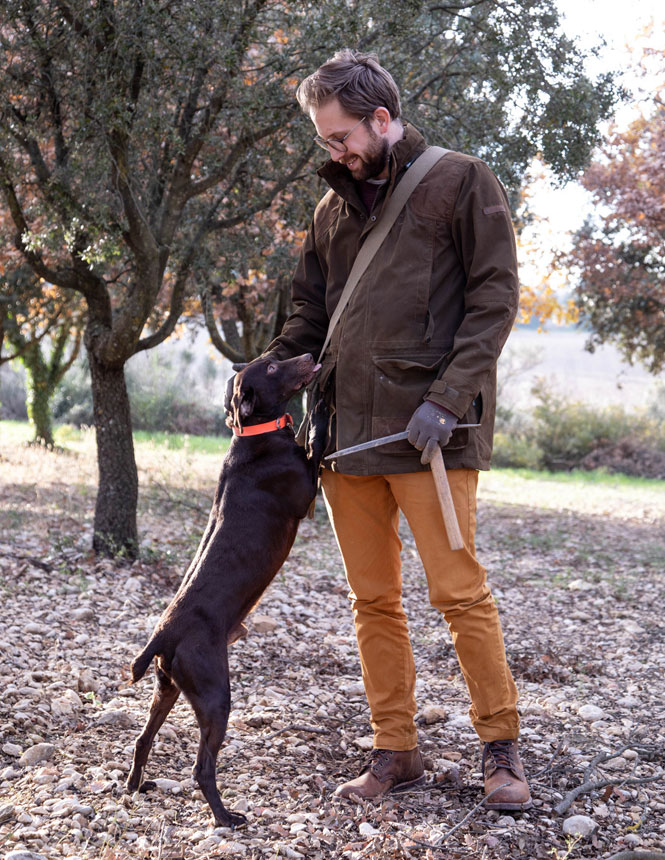
Practical information

Booking: www.truffes-jaumard.com

25 minutes from Avignon via the D907 then D225 then D942
Address: 634 Chemin du Traversier – 84170 Monteux

From mid-November to mid-March
Ventoux Truffle Museum
A dedicated space in Monieux
Richly authentic, the charming village of Monieux is home to this little museum that chronicles the history of the Ventoux truffle through an exhibition, photos and various objects used to harvest the black diamond.
The fun sensory table allows you to feel the truffle with your fingers and smell its aromas.
At the end of the tour, pop into the shop area to admire the local produce!

Practical information
From October to April, the museum is open Monday to Friday from 9 am to 12 noon and 2 pm to 5 pm (closed Wednesday afternoons). From May to September, the museum is open every day from 9 am to 12 noon and 2 pm to 5 pm (closed Wednesday afternoons).
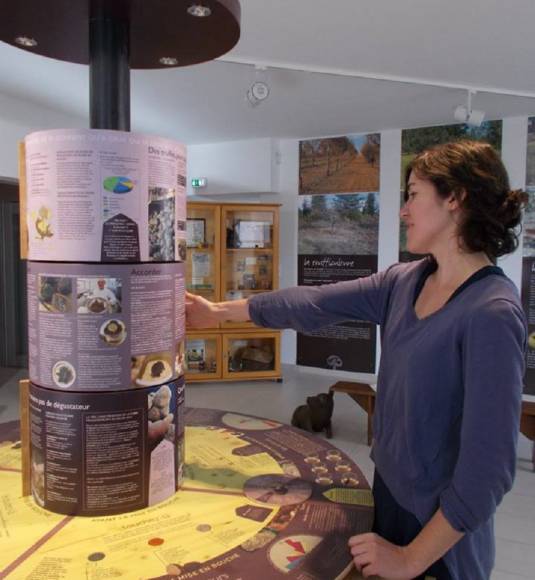
Birth of diamond
As you know, what makes a diamond special is its rarity – which is the reason why they are so valuable. Truffles are no different in this respect. Here we are going to try and answer the most popular questions that shroud this famous fungus in mystery. There are two varieties of truffle in Vaucluse: the tuber melanosporum, known as the black truffle, and the tuber aestivum, or summer truffle.
Our local truffles grow from May and enter a mature phase when the first autumn frosts arrive, peaking in late January. This is the best period to serve them as they are stronger in flavour at this time, presenting earthy notes. A shy species, truffles grow underground, in a truffle grove, at the foot of holm oaks, white oaks and lime trees, in soil rich in limestone, sand, sandstone and clay.
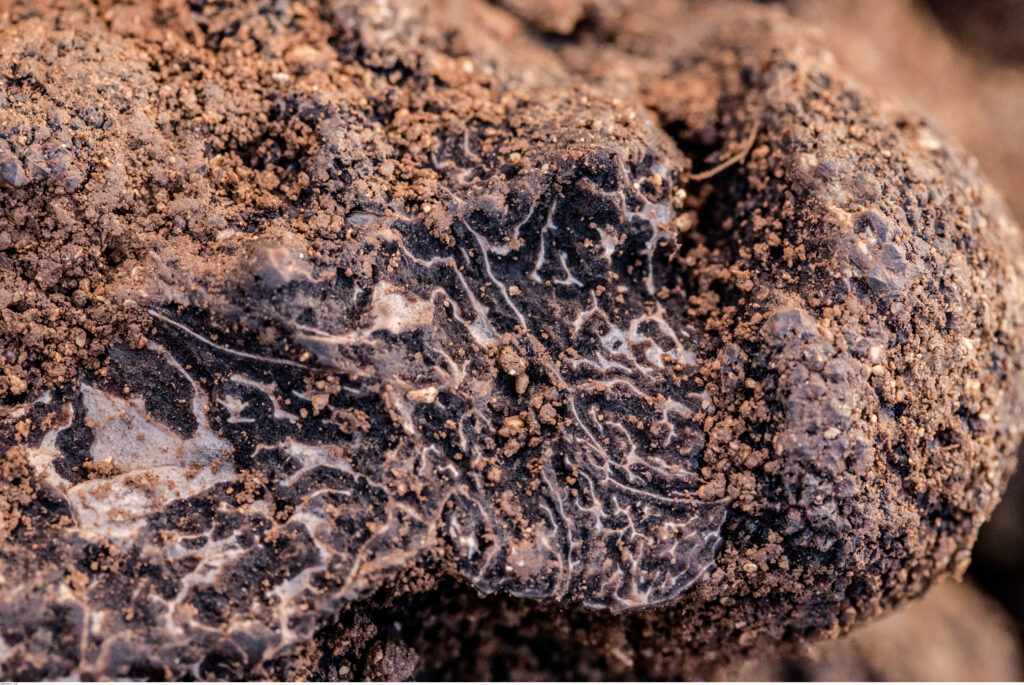
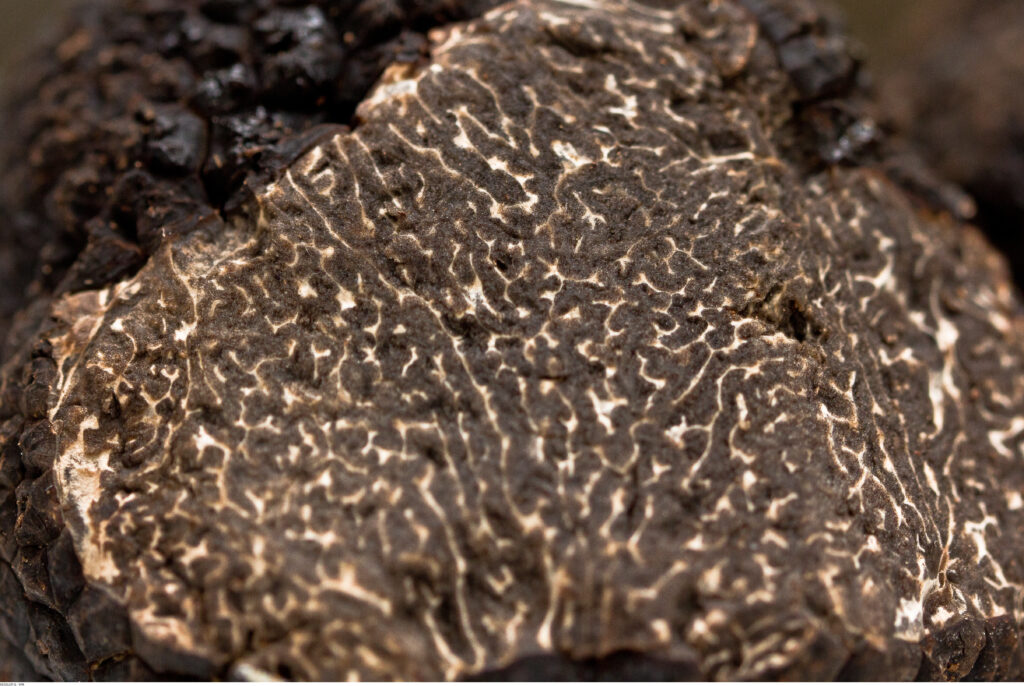

The enigmatic truffle
“If it rains in Saint-Roch, truffles will grow on the rock! If it rains in Saint-Barthélemy, there will be truffles aplenty!” Truffle farmers claim the proverb still holds true!
The capricious fungus demands a lot of care and monitoring to grow in the best conditions and thrive, and it’s almost impossible to find them growing naturally in the countryside. A truffle tree starts producing after five years, if a mycorrhiza is formed, and it can keep producing on average for 25 years. Although some truffle farmers are known to have trees that are still producing after 40 years! It all depends on the quality of the soil, if regular pruning is carried out and the climate conditions.
Treasure on a plate!
With the precious black diamond in our hands, it’s now time to demonstrate the value of this treasure by enhancing its flavour and letting it express itself through our taste buds. An ingredient so delicate it calls for particular attention in the kitchen. At 60°C, the tuber melanosporum actually loses its flavour. This is because it is thermolabile, i.e. changes in response to heat.
One simple but effective way to appreciate the flavour: slice a truffle with a mandoline and sprinkle over a slice of bread spread with oil, butter or cream. Another tip: infuse a truffle overnight with three or four eggs in an air-tight container. The truffle will have worked its magic and your eggs will be truffle flavoured! 😋
The Pays de Grignan-Enclave des Papes Tourist Office shares 5 simple and flavourful truffle recipes. Delicious!
